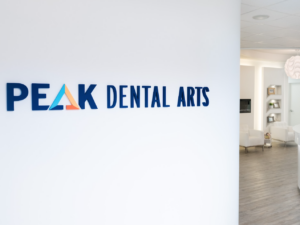Although most people believe that fillings are the only treatment option for dental cavities, tooth decay is sometimes a more complex issue that requires a different dental restoration approach. When this happens, dental inlays and onlays are often used.
If your North Vancouver dentist has spoken to you about inlays and onlays, but you are unsure what the treatments entail, don’t worry. Below, we’ll explain both options and when you might require either one.
What Are Cavities and Tooth Decay?
A cavity, also known as tooth decay, is damage caused by the erosion of tooth enamel. It leaves behind a hole in the tooth.
Cavities are typically caused by:
- Poor oral hygiene (not brushing or flossing regularly)
- Not visiting the dentist regularly for teeth cleaning
- Eating too many sugary foods
- Genetics
If left untreated, cavities can lead to:
- Pain
- Infection
- Abscess
- Extraction
How to Tell If You Have a Cavity
Without regular visits to the dentist, cavities can often go undetected in the early stages.
Some of the most common symptoms of a cavity include:
- Random tooth pain
- Sudden tooth sensitivity
- Dark spots on your teeth
- Pain when eating
What Treatment Options Are Available?
When caught early enough, cavities can easily be treated through the following dental treatments:
- Fillings
- Dental Inlay
- Dental Onlay
When cavities become severe, more serious intervention is needed. The following dental restoration treatments are used to treat more serious cavities:
- Roots Canal
- Extraction
- Crowns
What Are Dental Inlays?
Dental inlays are performed to treat cavities or other types of damage located in the centre of the tooth. Dentists often choose this approach when the cavity is too large for a simple filling. One benefit of dental inlays is that they are more durable than regular fillings.
The process is fairly simple and painless. It entails placing and fitting a single, solid pre-moulded filling into the grooves of your tooth. This filling is typically made from porcelain or composite resin material that matches the colour of your tooth.
Here is what the process of getting an inlay looks like:
- Your North Vancouver dentist will start the procedure by using a local anesthetic to numb the area where the tooth decay is located
- They will then drill into the decayed tooth and clean out the decay
- Next, a digital impression will be taken of your tooth’s top crevice
- The inlay will be designed in front of you and will be sent to a milling unit where the inlay is created
- Once the Inlay has been created, your dentist will place it on your tooth
What Are Dental Onlays?
A dental onlay is similar to an inlay but is larger and covers more of the tooth’s surface. Dentists often use onlays to treat more extensive tooth decay damage that is affecting the cusp of the tooth.
The dental onlay treatment process is similar to that of an inlay. It involves creating a pre-moulded onlay made of porcelain, ceramic or composite resin, which is then cemented to your tooth by your Vancouver dentist.
Which Option Do I Need?
Your North Vancouver dental restoration clinic may recommend a dental inlay if you are experiencing any of the following issues:
- Broken, damaged or decayed teeth affecting the centre of your tooth
- Damage so extensive that a filling would not be effective
- Damage that would prevent the dentist from placing a crown
Your dentist will likely recommend an onlay in a situation where:
- The cavity is too large to fill with a regular filling
- There is severe decay in the cusp of your tooth
- Your tooth structure has been weakened and would crack with a standard filling
How Are Inlays and Onlays Different From Fillings?
Dental inlays and onlays are similar to fillings; however, they differ in some key ways. The main distinction is that fillings treat smaller cavities, while onlays are used for more extensive tooth decay around the edges of the tooth. Meanwhile, inlays treat more severe cavities in the grooves of a tooth. Essentially, inlays and onlays are used when neither a filling nor a crown is an effective treatment option.
Dental Restoration in North Vancouver
See your North Vancouver dentist at least every six months to ensure that your teeth are in good health and to detect any problems before they become serious. In between regular checkups, if you experience pain, increased sensitivity or any other concerning dental issues, schedule an appointment at Peak Dental Arts right away.
Our team of North Vancouver dentists can help you choose the best treatment option to help you achieve optimal dental health.
Call us at 604-770-2222 or fill out our contact form to make an appointment.


